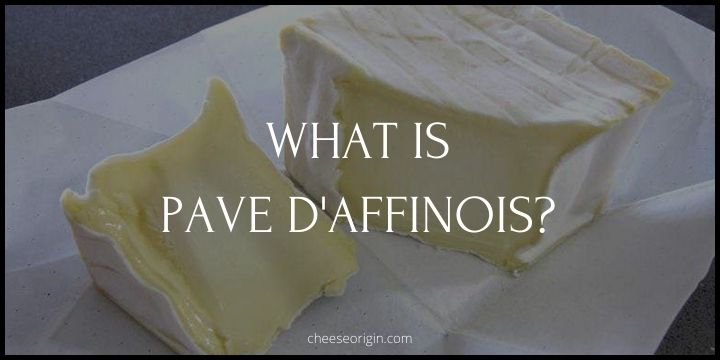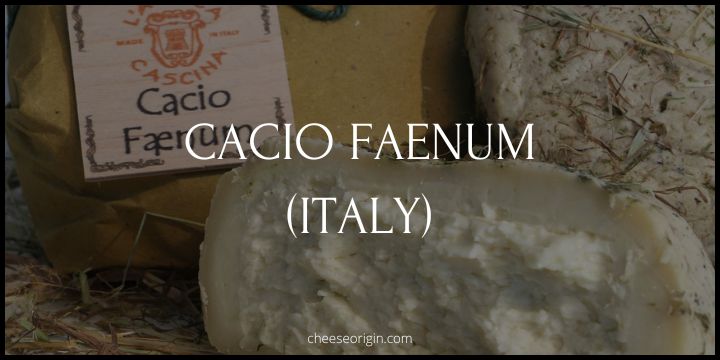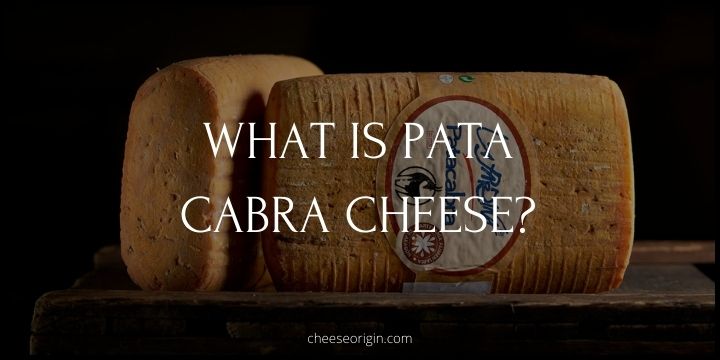What is Panela? A Guide to Mexico’s Versatile Cheese

Embark on a culinary journey as we delve deep into the heart of Mexico’s gastronomy to uncover one of its hidden gems: Panela cheese.
This versatile, fresh, and delightfully creamy cheese has been gracing Mexican tables for generations.
In this guide, we’ll explore its rich history, unique characteristics, and myriad uses in traditional and contemporary dishes.
Prepare to immerse your senses in the captivating world of Panela cheese, a truly remarkable testament to Mexico’s culinary prowess.
Quick Facts About Panela
| Panela Quick Facts | Description |
|---|---|
| Origin | Latin America (predominantly Colombia, Mexico, and Brazil) |
| Type | Unrefined whole cane sugar |
| Color | Golden brown to dark brown, depending on the level of processing |
| Flavor | Sweet with a hint of caramel or molasses |
| Uses | Used in cooking and baking, as a sweetener for coffee and tea, and in traditional drinks like ‘agua de panela’ |
| Production Process | Juice is extracted from sugar cane, boiled until it thickens into a syrup, and then poured into molds to harden |
| Nutritional Value | Contains minerals like calcium, iron, and potassium. It’s also rich in vitamins B1, B2, B5, B6, C, and D |
| Alternative Names | Known as ‘piloncillo’ in Mexico and ‘rapadura’ in Brazil |
What is Panela cheese?
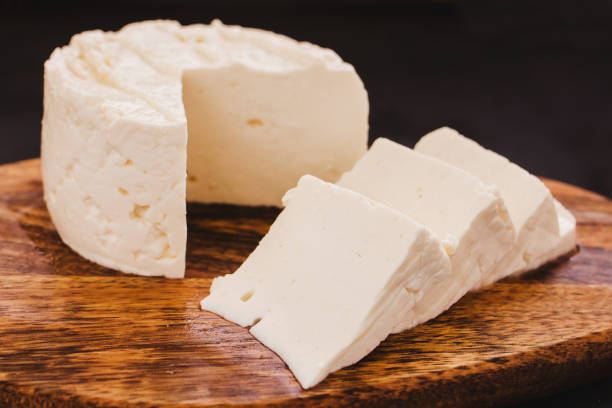
Panela cheese, also known as Queso Panela, is a white, fresh and smooth Mexican cheese of pasteurized cow’s milk.
It is named after the Spanish word ‘panela’ which refers to a type of mold used in Mexico to shape this cheese.
The cheese has a mild, fresh flavor with a slightly salty undertone. It’s often used in Mexican cuisine for dishes like enchiladas, tacos, and salads because it holds its shape when heated, rather than melting. Its texture is somewhat similar to that of mozzarella or Indian paneer.
Is Panela cheese the same as Mozzarella?
Panela and Mozzarella cheese may share some similarities in texture, they are not the same.
| Criteria | Panela Cheese | Mozzarella Cheese |
|---|---|---|
| Origin | Mexico | Italy |
| Milk | Cow’s milk (pasteurized) | Cow’s milk or Water Buffalo’s milk |
| Flavor | Mild, slightly salty | Mild, milky |
| Texture | Firm, holds shape when heated | Soft, stringy, melts when heated |
| Common Uses | Enchiladas, tacos, salads | Pizza, lasagna |
| Aging Time | Fresh (no aging) | Typically fresh, but can be aged |
| Melting Ability | Does not melt easily | Melts easily |
Panela is a Mexican cheese made from pasteurized cow’s milk. It has a mild, fresh flavor with a slightly salty undertone and it holds its shape when heated rather than melting.
Mozzarella, on the other hand, is an Italian cheese also made from cow’s milk (or traditionally from water buffalo milk), and it is well-known for its stringy, elastic texture and mild flavor. Unlike Panela, Mozzarella melts beautifully, which is why it is often used in dishes like pizza and lasagna.
While both can be used in a variety of dishes, their unique characteristics make them suited to different culinary applications.
>> Click here to read our in-depth guide on Mozzarella
Is Panela cheese good/healthy for me?
Panela cheese is generally considered to be a healthy choice. It is rich in protein and calcium, which are essential for bone health and muscle function.
This cheese also contains other beneficial vitamins and minerals like phosphorus, Vitamin B12, zinc, selenium, and Vitamin A.
Additionally, Panela cheese has fewer calories compared to many matured or cured cheeses. However, like all cheeses, it should be consumed in moderation due to its fat content.
Is Panela cheese high in cholesterol?
Panela cheese does contain cholesterol, but the amount can vary based on the brand. For instance, a serving of El Mexicano’s Queso Panela cheese contains 30 mg of cholesterol.
While this isn’t a particularly high amount, it’s still important to consider if you’re watching your cholesterol intake. The American Heart Association recommends that individuals consume no more than 300 milligrams of cholesterol per day.
Panela cheese Nutrition Facts
| Nutrient | Amount per 1 oz (28g) serving |
|---|---|
| Calories | 80 |
| Total Fat | 6g |
| Saturated Fat | 4g |
| Trans Fat | 0g |
| Cholesterol | 20mg |
| Sodium | 210mg |
| Total Carbohydrate | 0g |
| Dietary Fiber | 0g |
| Sugars | 0g |
| Protein | 6g |
| Vitamin D | 0% |
| Calcium | 10% |
| Iron | 6% |
| Potassium | 0% |
Also read: Savor the Flavor: 20 Cheeses with the Least Lactose
Is Panela cheese the same as Feta?
No, Panela cheese and Feta cheese are not the same. Both originate from different countries and have distinct characteristics.
| Aspect | Panela Cheese | Feta Cheese |
|---|---|---|
| Origin | Mexico | Greece |
| Milk Source | Usually cow’s milk | Traditionally sheep’s or goat’s milk |
| Flavor | Mild, creamy | Tangy, salty |
| Texture | Soft, maintains shape when heated | Crumbly, slightly grainy |
| Melting Properties | Does not melt, but softens | Does not melt easily |
| Common Uses | Grilling, frying, salads | Salads, pastries, table cheese |
Panela cheese, also known as queso panela, is a Mexican cheese that is white, fresh and smooth. It has a mild flavor and a soft, creamy texture. It does not melt when heated; instead, it softens and holds its shape.
Feta cheese is a Greek cheese that is crumbly and slightly grainy in texture with a tangy, salty flavor. It’s traditionally made from sheep’s or goat’s milk. It can be used in salads, pastries, or as a table cheese.
>> Click here to read our in-depth guide on Feta
Is Panela a good melting cheese?
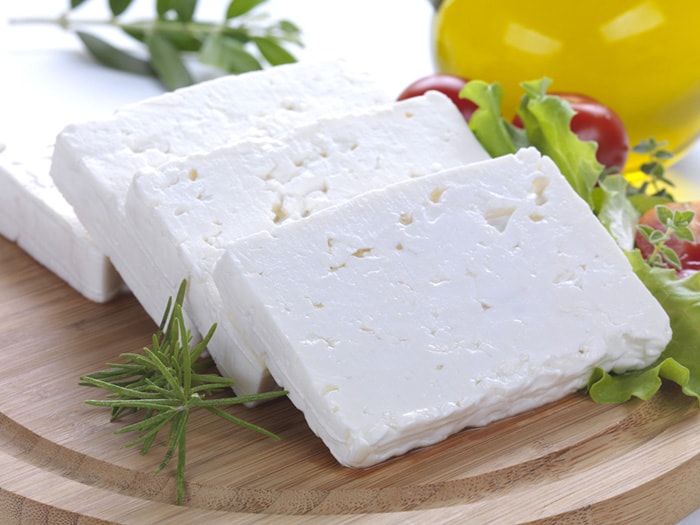
Panela cheese is not typically considered a good melting cheese. While it does soften when heated, it tends to maintain its shape rather than melting and becoming gooey like some other cheeses.
In terms of using Panela cheese in dishes commonly associated with melted cheese, such as pizza or quesadillas, it may not be the best choice.
The truth is, Panela cheese does soften and can be used in heated dishes, nevertheless, it’s not typically considered a ‘melting cheese’ in the way that cheeses like mozzarella or cheddar are.
How do you melt Panela cheese? (if you really need to)
Panela requires specific methods and careful handling to melt properly.
Here’s how you can do it:
- Microwave Method: Set your microwave to the lowest heat setting and heat the cheese for about 20 to 30 seconds. Remember, heating cheese at high temperatures could alter its texture and flavor.
- Oven Method: Preheat the oven to 190C or 375F for 10 minutes. Bake the cheese in the center of the oven for approximately 20 minutes, or until it reaches your desired level of meltiness.
- Pan Frying: Since Panela cheese holds its shape well, it can actually be pan-fried. You can toss it right into a pan and get it brown without it losing its form.
The key to melting Panela cheese is using low heat and giving it time.
What does Panela cheese taste like?
It has a mild, buttery, creamy taste that is ‘almost sweet’ and slightly salty with a hint of tanginess. Its flavor is subtle, not overpowering, making it a versatile cheese that can be used in a variety of dishes.
The mildness of its flavor allows it to blend well with other ingredients without overshadowing them.
What is Panela cheese used for?
- Grilling: Panela cheese holds its shape when heated, which makes it an excellent choice for grilling. It can be served as a warm appetizer or side dish.
- Frying: Similarly, Panela can be pan-fried until it forms a golden crust. It’s often used this way in quesadillas, enchiladas, or chiles rellenos.
- Salads: The mild flavor and firm texture of Panela cheese make it a wonderful addition to salads.
- Sandwiches: Panela can be sliced and used in sandwiches for a creamy, satisfying addition.
- Snacking: Panela cheese can be enjoyed on its own, or with crackers and fruit.
- Topping: Crumble it over tacos, nachos, or any dish that could use a bit of creamy, mild cheese.
- Baking: Because it holds its shape when baked, you can use it in pastries or other baked goods for a unique twist.
Is Panela like Halloumi?
Panela and Halloumi are similar in some ways, but they also have distinct differences.
Similarities:
- Texture: Both Panela and Halloumi have a firm texture that holds up well to heat. They maintain their shape when grilled or fried, unlike many other cheeses.
- Melting Point: Both cheeses have a high melting point, which makes them ideal for grilling.
Differences:
- Flavor: Panela has a mild, creamy, and slightly salty flavor, while Halloumi is notably saltier and has a stronger, more savory flavor.
- Browning: Panela cheese is typically wetter than Halloumi, so it doesn’t brown as nicely when grilled.
- Origin: Panela originates from Mexico, while Halloumi is a traditional cheese of Cyprus.
- Usage: While both can be used in similar dishes, Halloumi is often served alone as a grilled cheese appetizer, whereas Panela is commonly used in Mexican cuisine, in dishes like enchiladas and quesadillas.
>> Click here to read our in-depth guide on Halloumi
What goes well with Panela? Pairing guide
Food that goes well with Panela:
| Category | Food |
|---|---|
| Mexican Dishes | Tacos, Enchiladas, Quesadillas, Chiles Rellenos |
| Salads | Green Salad, Tomato Salad, Avocado Salad |
| Sandwiches | Grilled Cheese Sandwich, Veggie Sandwich, Club Sandwich |
| Appetizers | Stuffed Jalapenos, Guacamole with Panela chunks, Panela dip |
| Desserts | Pastries with Panela, Fruit Salad with Panela |
| Grilled Foods | Grilled Veggies with Panela, Grilled Chicken with Panela |
| Snacks | Crackers with Panela, Sliced Panela with fresh fruits |
Also read: 11 Best Crackers that Pair Well with Cheese
Beverage that goes well with Panela:
| Category | Beverage |
|---|---|
| Cocktails | Margarita, Paloma, Organic Panela Syrup Cocktails, Panela Mojito |
| Non-Alcoholic Drinks | Aguapanela, Papelón con Limón, Aguapanela con Limón |
| Hot Beverages | Hot Aguapanela |
| Refreshing Drinks | Iced Aguapanela, Papelón con Limón |
| Traditional Latin American Drinks | Aguapanela (Colombia), Papelón con Limón (Venezuela) |
Also read: Best Wine and Cheese Pairings: The Ultimate Guide
What’s the best Panela cheese substitute?
- Queso Fresco: A Mexican cheese that is soft, moist, and crumbly with a mild flavor.
- Queso Blanco: A creamy, soft cheese that melts well and has a mild flavor.
- Cotija Cheese: A hard, crumbly cheese that has a strong, salty flavor.
- Requesón: A Mexican version of Ricotta cheese, it’s creamy and slightly sweet.
- Feta Cheese: A Greek cheese that is crumbly and has a tangy, salty flavor.
- Ricotta: An Italian cheese that is creamy and mild, often used in desserts.
- Cottage Cheese: A fresh cheese curd product with a light flavor.
- Halloumi Cheese: A Cypriot semi-hard, unripened brined cheese that has a high melting point, making it great for grilling or frying.
- Queso Oaxaca: A Mexican cheese that is stringy and melts well, similar to Mozzarella.
- Non-Aged Cotija: This version of Cotija is softer and less salty, more similar to Feta.
- Ricotta Salata: A variation of Ricotta that has been pressed, salted and dried.
- Paneer: An Indian cheese that doesn’t melt, similar to Halloumi.
- Hard Ricotta: A firmer version of Ricotta that can be sliced or grated.
The Pros and Cons of Panela cheese
Benefits:
- Natural Sweetener: Panela is a natural sweetener made from sugar cane juice. It doesn’t undergo the same refining process as white sugar, retaining many of the plant’s original nutrients.
- Rich in Nutrients: Panela is rich in vitamins and minerals such as iron, calcium, magnesium, and vitamin B.
- Flavorful: Panela has a unique, rich flavor that is often described as caramel-like or molasses-like. This makes it a great addition to a variety of dishes and beverages.
- Traditional Use: In many cultures, panela is used traditionally in cooking and medicine for its health benefits.
Drawbacks:
- High in Sugar: Although it’s a natural product, panela is still high in sugar and should be consumed in moderation, especially by people with diabetes or those trying to lose weight.
- Not as Sweet: Panela is not as sweet as refined sugar, which means you might need to use more of it to achieve the same level of sweetness.
- Availability: Depending on where you live, panela may not be readily available in your local grocery store.
- Price: Panela can be more expensive than regular sugar due to its production process and the fact that it’s often imported.
Frequently Asked Questions
1. Is Panela cheese salty?
Panela cheese is known for its mild and pleasant flavor profile. Unlike some other types of cheese, it does not have a pronounced salty taste. In fact, one of the characteristics that distinguishes Panela cheese is its subtly sweet undertones, which balance beautifully with its overall creamy and fresh taste.
Its low salt content makes it a versatile ingredient in cooking, allowing it to seamlessly blend into a variety of dishes without overpowering them with saltiness.
2. Is Panela cheese good for weight loss?
Panela cheese can be a good addition to a weight loss diet when consumed in moderation. It is relatively low in calories, with a typical 28-gram serving containing around 80 to 90 calories.
This serving also contains around 6 to 7 grams of protein, a nutrient that can help to promote feelings of fullness and support muscle growth and repair.
Panela cheese is also low in carbohydrates, making it suitable for low-carb diets.
However, it is worth noting that Panela cheese does contain fat, so portion control is important.
As always, it’s recommended to consult with a healthcare professional or a nutritionist for personalized advice on weight loss and diet.
3. Does Panela cheese have sugar?
Panela cheese is generally considered sugar-free. A typical serving of Panela cheese contains zero grams of sugar. While it does have some carbohydrates, the majority of these are complex carbohydrates rather than sugars.
This makes Panela cheese a suitable choice for those following a low-sugar or sugar-free diet.
4. How do you store Panela cheese?
Storing Panela cheese properly is essential to maintain its freshness and quality. The cheese should be kept in the refrigerator, ideally in the vegetable drawer where humidity levels are higher.
To prevent it from drying out, wrap the cheese in wax paper or parchment paper before placing it in a resealable plastic bag. This will allow the cheese to breathe while also keeping it moist.
It’s also important to keep the cheese away from strong-smelling foods, as cheese can absorb odors.
If you notice any mold on the cheese, cut off at least an inch around and below the mold spot, being careful not to touch the mold with the knife.
Always check the cheese before consuming and if it smells off, it’s best to discard it. Remember, when it comes to food safety, it’s better to be safe than sorry.
Also read:
- A Guide to Provolone: A Masterclass in Flavor and Versatility
- Pecorino Romano: The Ultimate Guide to Italy’s Age-Old Cheese
- Utz Cheese Balls: The Ultimate Guide (Taste the Tradition)
- A Guide to Havarti: The Star Cheese of the Culinary World
- The Ultimate Guide to Gruyère: A Swiss Delicacy
- Cheese Curds: The Unsung Heroes of the Dairy World
- Fior di Latte: A Comprehensive Guide to Italy’s Creamy Delight
